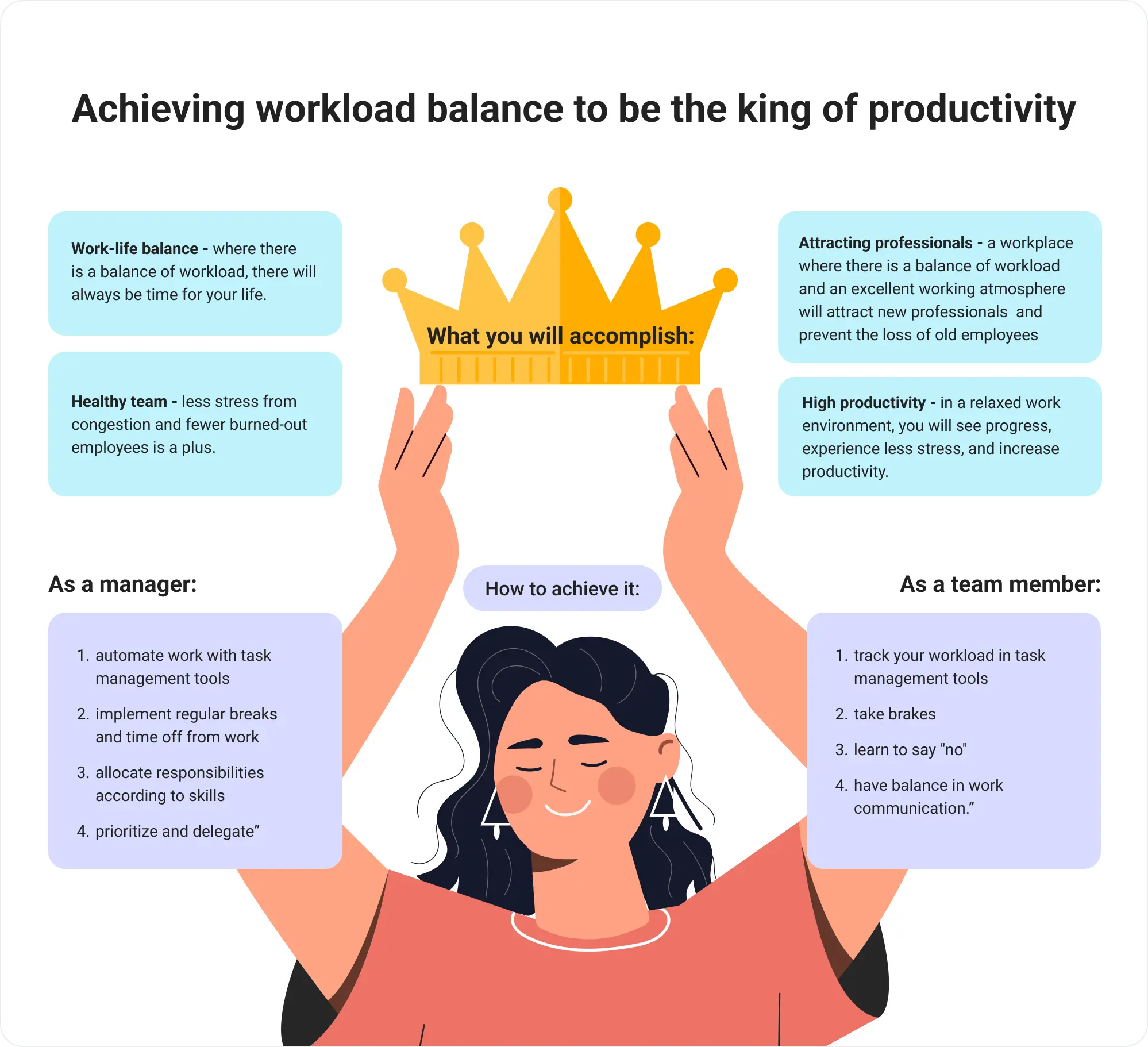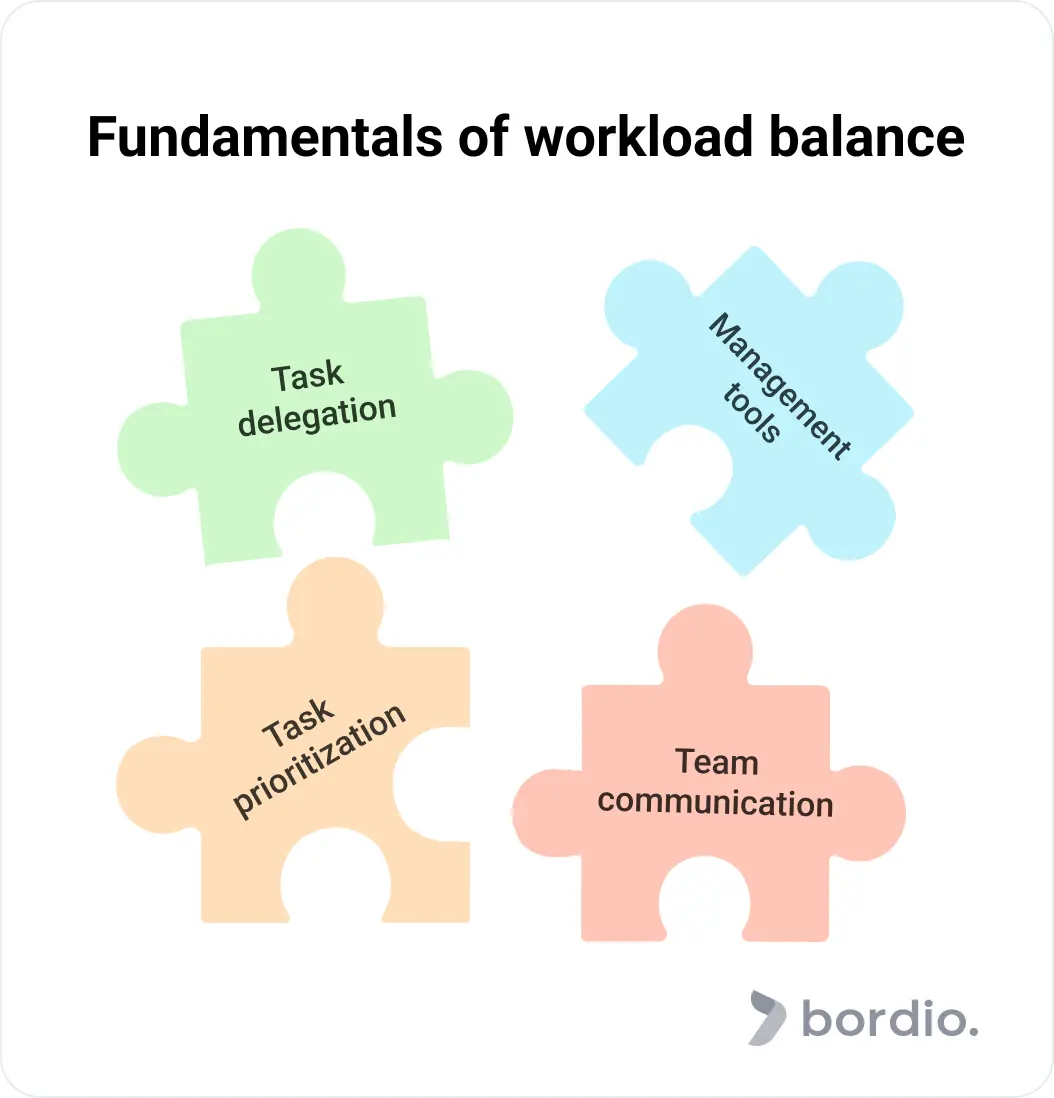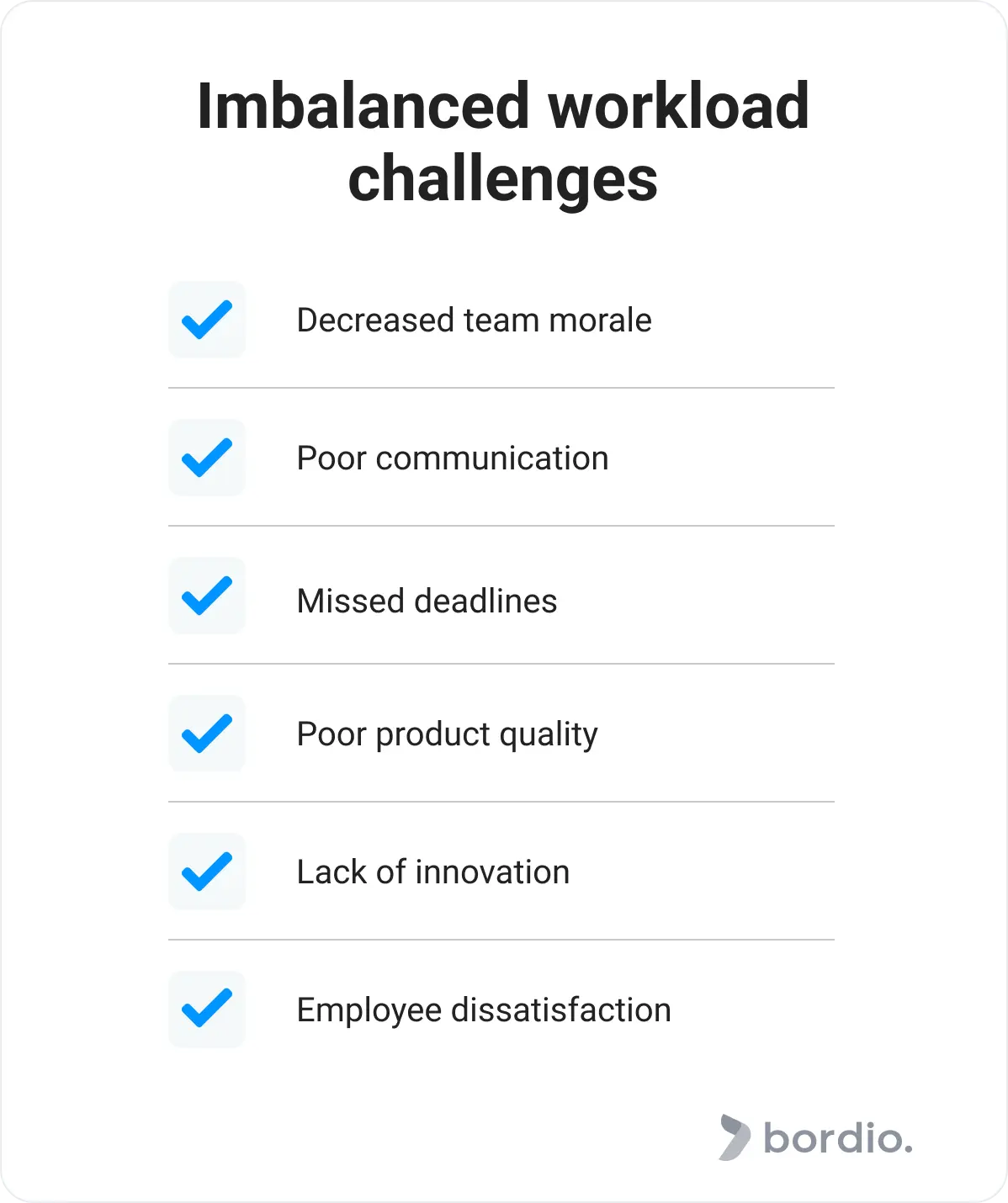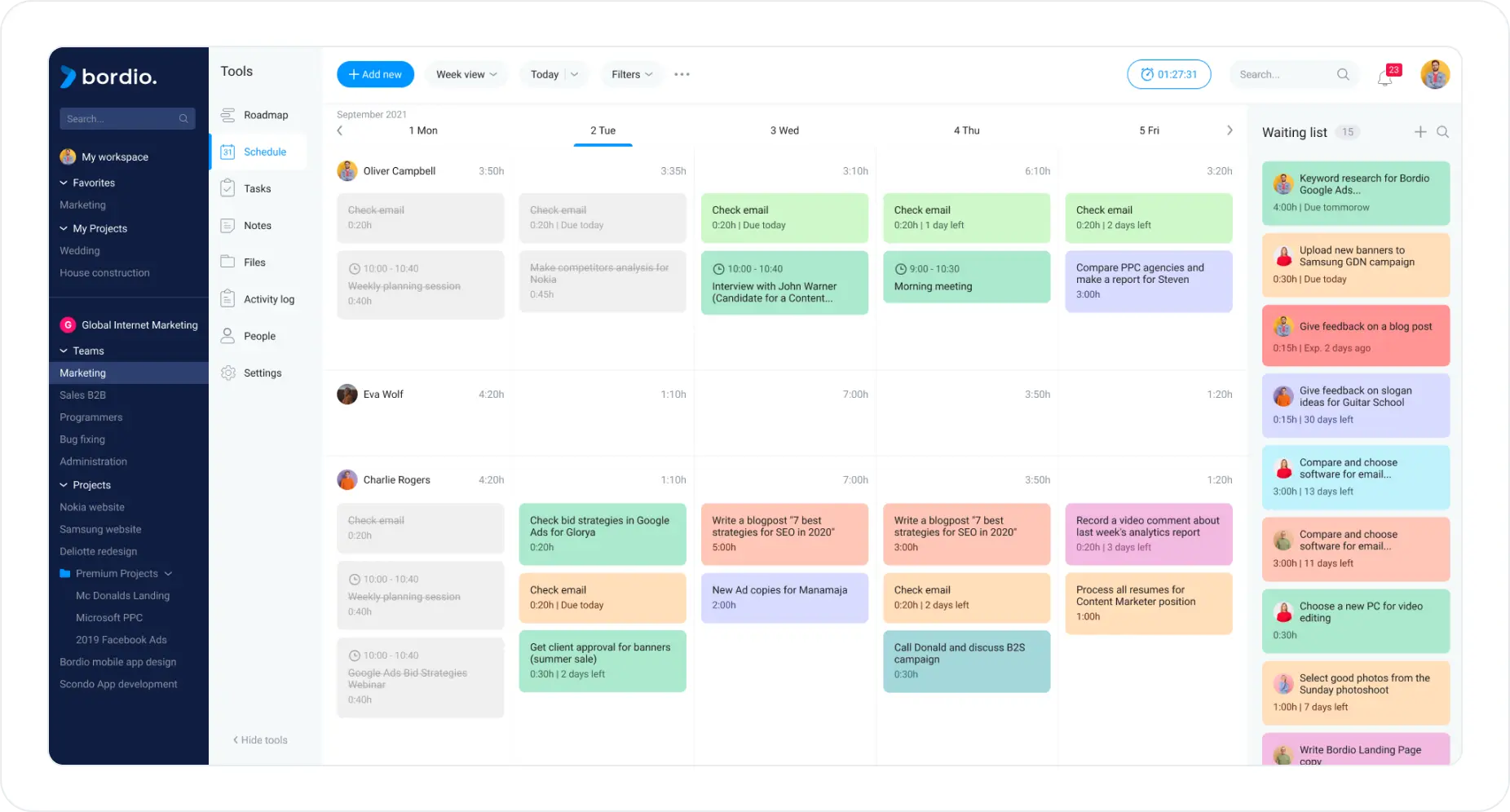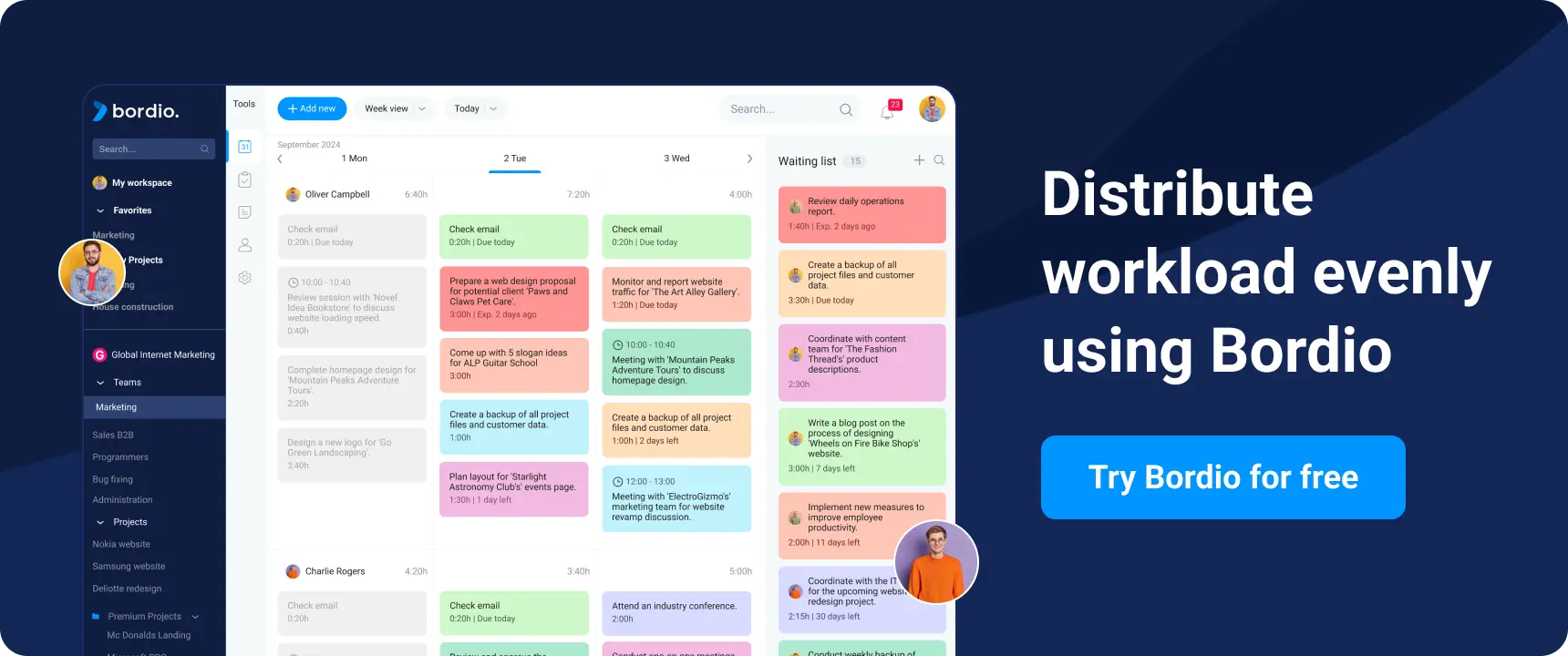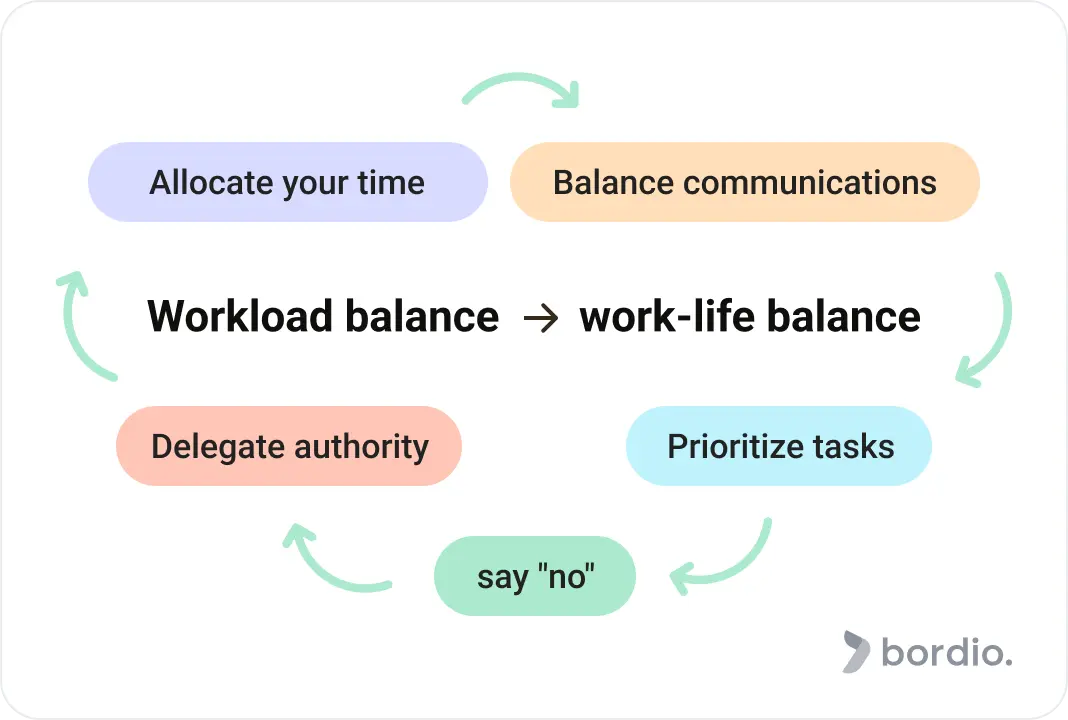When you do the same simple job duties daily, you may think that workload balance is a mysterious myth, the ultimate mastery that is very hard to achieve. Do you continue to suffer from stress and sacrifice personal time in favor of your career? In reality, however, proper workload balance is not something you can’t achieve but a vital component of a successful and fulfilling life. So that you don’t have to go on living without a work balance, we will look at how to become a master at it in this article.
A balanced workload is crucial to maintaining high productivity at work and harmony in life. Improper balance will lead to overload, stress, and even poor health. If you strive for optimal work balance, we will give you simple but effective tips to help you achieve it.
What does workload balance mean in the context of professional life?
Workload balance in professional activities is the striving for an equal distribution of duties and tasks among employees or groups and the proper delegation of responsibilities. Successful workload management is necessary to optimize productivity and create conditions in which employees receive tasks that are within their capabilities and do not burn out from a considerable number of tasks. Workload balancing is also essential for remote workers to have the right work-life balance and effective time management.
Tip: You can also read our article about the 19 Best Time Management Tools of 2023 With Reviews to keep your workplace productive and effective.
So, how do you balance the workload in a team? First of all, it is necessary to learn how to properly distribute tasks according to team member’s skills. When team members are assigned tasks according to their competencies and capabilities, it helps to increase overall productivity and prevents overloading. Employees who are not constantly overstressed work more efficiently and can show high productivity.
Another critical aspect to consider is the stress factor of employees. Values work-life balance is also about not causing employees to feel anxious and stressed by the amount of work they must do. High stress levels in the workplace can lead to burnout, and then the employee will not only be unable to work but may leave their workplace for a long time. A work environment with an even distribution of tasks minimizes the effects of stress and contributes to an overall increase in happiness and job satisfaction.
Thus, a balanced workload has a positive impact on employee turnover rates. Not only is it essential that the employee does not get burnout or go on sick leave but it is also important that the person wants to work for the company at all. Employees who work for a company that cares about an even distribution of responsibilities feel more respected and valued team members. This creates a strong bond with the organization and reduces the likelihood of leaving for another job.
The common challenges associated with an imbalanced workload
Earlier, we listed the disadvantages of a poor workload balance for employees, employee layoffs, the negative impact of excessive workload on well-being, and reduced future productivity, and now let’s take a closer look at the other problems that result from working in an unbalanced workload.
1. Diminished team morale:
When certain team members consistently work too hard, it can damage the group’s morale. Individuals with more obligations may feel overburdened or angry, while those with less work may feel undervalued.
2. Communication breakdown:
Uneven distribution of work can lead to a breakdown in the team’s open communication. Some team members may feel left out of meaningful discussions or decisions, leading to miscommunication and less effective collaboration, leading to loss of overall job satisfaction.
3. Missed deadlines:
There’s a considerable chance of missing deadlines with an uneven workload. Overworked staff members might not be able to finish assignments on time, harming the organization’s image and the project’s overall timetable.
4. Quality problems:
Getting things done quickly because of an uneven workload might result in subpar work. Overburdened workers might not have enough time to concentrate on producing high-quality work, which could result in mistakes and subpar output.
5. Lack of innovation:
An uneven workload may hinder a team’s originality and inventiveness. Overworked employees might be unable to engage in strategic conversations or think creatively, making it more difficult for the company to grow and adapt.
Tip: You can solve these problems by using work management software and project management tools.
6. Inequality and discontent
Uneven distribution of work can create a sense of inequality among team members, leading to resentment and conflict. This can harm teamwork and collaboration as individuals may feel their contributions are not valued or recognized.
How does Bordio help in achieving workload balance?
So, for your company and its employees to work efficiently, you need to master the skill of workload balance and master this skill perfectly. What do you need to do for that? Let us introduce Bordio!
Bordio is a task planner that will help you control your team’s workload balance. In Bordio, you will be able to assign tasks and see their completion progress. Along with the tasks, the tool will include events and meetings to count the employee’s workload fairly. And forget about having to solve all tasks instantly or spend a lot of time on scheduling! You can put it on a waiting list, use it as a backlog, and transfer it to your calendar as tasks are completed. Moreover, you won’t need to use another tool for calendar tracking – it’s all available in Bordio. The simple interface will be easy to learn and use for both in-office and remote workers, so it will be easy to implement this team management software in your work.
As a manager, you’ll find monitoring assignments and tracking your team’s tasks easier. As a team member, you can store your tasks in one place and see your progress, the progress of the whole group, and different projects separately. All of this will be very easy with Bordio; that’s why, along with reading productivity books and learning strategies, we recommend using this tool to monitor your workload and plan your to-do’s.
Benefits of workload balance in the workplace
Make a healthy work-life balance with the strength of the team’s workload.
A balanced workload in the workplace directly impacts employee health and values work-life balance. By allowing them to avoid overwork, having heavy workload, and stressful situations, a good balance of work performance reduces the risk of employee burnout with overwork and stress. Employees who feel physically and emotionally healthy are more efficient and less likely to experience sickness absences. This is beneficial to the individual having a good work-life balance and results in lower healthcare costs for the company and increased overall productivity.
Attract more talent in the workplace with a balanced workload.
Companies that strive for an even distribution of tasks and a better balance of productivity create an attractive work environment, which helps attract new talent. In contrast, workplaces where workload imbalances are present will quickly lose employees. Today’s professionals value financial benefits and concern for their well-being. By offering workload balancing, companies attract the attention of qualified candidates looking for a job and a caring work environment. Such companies are also better able to retain their employees, which reduces the cost of retraining new employees and maintains a stable workforce.
Distribute workload evenly and increase employee productivity.
One of the critical benefits is increased productivity. Employees who feel allocating tasks is fair and achievable are more motivated and efficient in performing their duties. Optimized productivity leads to better business performance overall. More efficient team or individual performance means faster achievement of the company’s goals and, as a result, more substantial competitiveness in the market. That’s why you should avoid the workload imbalances.
How to become a king in balancing workload – practical tips.
1. Automate Workload Balancing
Manual methods of task assignment are not only time-consuming but also inefficient. Simply assigning tasks is insufficient; you must perform monitoring, evaluation, and problem-solving duties to avoid recurrence. Workload balancing can be revolutionized by using programs like remote team managing softwares and time management tools, for example you can try Bordio services – created specifically for this purpose. Bordio has pre-configured features allowing you to distribute tasks that solve your workload struggles efficiently. Its calendar management system simplifies workload management by allowing you to track how much time each member spends on each activity and daily.
2. Take Breaks Strategically
Another important aspect is regular breaks and rest in general. Regular breaks are essential for improving concentration and general well-being. While the effects of incorporating short, refreshing breaks into your work may not be immediately apparent, research shows that they have significant benefits. According to research, breaks can successfully reduce or avoid stress, maintain performance, and eliminate the need for extended recovery times at the end of the day. Socializing with coworkers is helpful; it can also help coworkers share thoughts and creative ideas with each other. It can also boost mood and promote a positive sense of well-being. You can create a similar habit in your workplace to improve the well-being of your team.
3. Learning to Say No
- Give a Sincere Apology: Clearly state your worries over the amount of work you are currently doing, and offer a cooperative effort to reassess and, if needed, reallocate tasks.
- Present the Request Differently: If the extra work is outside the scope of what you typically do, admit it and ask for flexibility, demonstrating that you are eager to take on the challenge even if it needs a longer learning curve.
- Emphasize the Bigger Picture: When refusing, explain more comprehensively how accepting more work can affect your present workload and strain coworkers.
- Provide Alternatives: You may mitigate the rejection by suggesting a different course of action, such as assigning the assignment to someone more qualified or accessible.
- Express Gratitude: Show your appreciation for being considered, creating a pleasant environment, and recognizing their confidence in your talents even when you have to decline an offer.
- Practice Assertiveness: Develop your assertiveness and politely refuse to back down. Keep your posture and tone neutral while reiterating that this is not a personal choice.
Workload balancing strategies – Prioritization and Delegation Technique
Performing a task may seem simple for you when you are looking for a candidate, but it can be daunting for others. When you delegate a job, it is essential that the person you delegate the task to fully understands the task and the process of completing it and is generally suited to their skills. If you follow specific instructions, ensure they are clear and understandable.
Tip: To exhibit good communication during projects, you can use – remote team management software.
Don’t delegate a task to just whoever is available at the moment. Identify each team member’s strengths and weaknesses, examine their skills and abilities, and delegate work that matches their qualifications. This approach will help you be consistent when delegating. Consistently assigning the same task to one member allows them to learn it faster and possibly get rid of it for good.
What are the benefits of delegation for workload balancing?
Delegation is crucial in balancing workload by ensuring employees can focus on tasks matching their skills and experience. Distributing the workload evenly reduces stress, increases productivity, and creates a more effective team.
How do we identify tasks that can be delegated?
Selecting tasks to delegate requires careful analysis of each team member’s strengths and weaknesses. Tasks that match the skills and experience of employees are ideal for delegation. This increases efficiency and promotes team members’ professional growth, allowing them to develop within their competencies.
The connection between workload balance and increased productivity
- Balancing the workload is a crucial aspect of optimal utilization of work resources. When tasks are distributed evenly, each employee can maximize their time and energy. To make it easier to see tasks, use the task planner by Bordio. This leads to an increase in the overall productivity of the team or organization, as each employee can contribute without facing excessive overload or uneven distribution of tasks.
- Balancing workload has a direct impact on the physical and emotional well-being of employees. An even distribution of tasks helps prevent fatigue and avoid long-term stress, which supports maintaining high energy and motivation levels. Employees who do not face excessive workloads are more likely to keep their productivity high over the long term.
- Balancing workloads helps to improve the quality of work. When employees devote sufficient time and attention to each task, the results are more meaningful and of higher quality. This factor is significant in critical areas where accuracy and attention to detail are essential. Thus, balancing the workload not only increases productivity in a quantitative sense but also contributes to improving the quality of work
Good balance in workload – best for work-life integration
Let’s summarize the critical points of the article into simple bullet points:
- You must track your workload to understand how you allocate your time.
Start this process by observing how you allocate your workload. Identify the tasks you spend time on and regularly make a “to-do” list. This approach will help you understand your daily tasks and identify areas to improve your workload balance by eliminating unnecessary activities. You will then be able to improve the productivity of your daily routine.
- Balance in communications – optimize your workload communication
Optimize your phone calls to ensure efficiency, minimize wait times, and leave concise messages. Organize your inbox with folders dedicated to different types of workload-related emails. Set boundaries for communicating with coworkers at inappropriate times to avoid interrupting them and stay organized and focused on work tasks. Critical workflows and task progress can be seen in the team’s planner and online to-do lists. Prioritize attending meetings, choosing only those that are necessary or useful to balance the workload. Prepare thoroughly for each meeting to maximize its effectiveness and minimize the need for follow-up sessions that may add unnecessary workload.
- Prioritization – strategic priorities for a balanced workload
Even when working on multiple projects and multiple work tasks, you need to have a clearly defined list of priorities. Regularly review and adjust your workload priorities based on changing circumstances so you don’t miss your commitments and meet deadlines efficiently.
- Delegate authority through workload balancing.
Master the art of load balancing and delegation to achieve a balanced distribution of tasks among capable colleagues. While training others may take time at first, the long-term benefits of workload efficiency far outweigh the short-term effort. Delegation is a fundamental aspect of achieving workload balance.
- Learn to say “no” when necessary.
Politely decline requests that may upset workload balance. Colleagues and external demands may make demands on your time, but it’s important to say “no” when necessary. This will allow you to control your workload and focus on tasks, promoting a balanced work-life integration.

